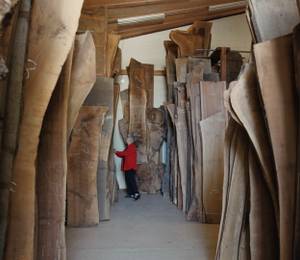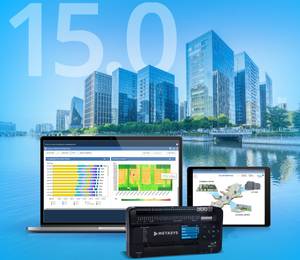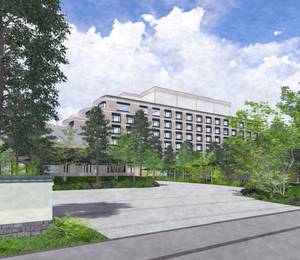Beirut, Lebanon – As an existential financial crisis threatens Lebanon, the opening of the LSB regional headquarters, located in the city of Tyre on the southern coast of Lebanon, examines the untapped potential in challenging established code. Tyre witnessed uncontrolled urban development during the Lebanese civil war that spanned from 1975 to 1991. Post-war, newly adopted building codes favored an increase in the densification of existing neighbourhoods and a disregard for public space that enabled the continued sprawl.
“Presented with a cornerstone lot in a vacant newly repurposed agricultural zone, we encountered both a challenge and a responsibility,” explained Karim Fakhry, Principal at Domain Public Architects.
The headquarters establishes a balance between maximum visual presence and minimal physical presence. Limited to just three floors, it is more visually prominent than its actual scale. The structure, with its post-tensioned roof and nine-metre cantilever, allows for a minimum building footprint. It thus liberates the ground floor from all structural elements, enabling a shaded public plaza as an open flexible space that can host various curatorial programs.
Three primary visual connections further emphasize the role of the public spaces and respond to the context and orientation. The trapezoidal courtyard creates a visual conduit between the multi-level offices and the central circulation space. The curved main façade hovers over the plaza to create a direct visual dialogue between the offices and the outdoors. The windows of the eastern and western façade frame the distant landscape while limiting solar gain.
The architectural elements perform dual roles. While they enhance public engagement, they advocate for sustainability.
The building code was the most challenging parameter to the conception of the public space. Existing laws stipulate that any outdoor area located under a built structure is considered interior space. It is therefore deducted from the total allowable built-up area. Given that it is not an enclosed space it has no monetary value. The development of civic and community space has thus been heavily discouraged by law, even accompanied by financial waste.
“To remedy the value loss, we implemented a series of spatial maneuvers. First, we omitted the roof over the third-floor terrace, excluding the space from the total floor-area ratio (FAR). We then replaced the balcony space on the ground floor with an open courtyard, gaining additional area,” elaborated Fakhry.
“The interior glass enclosures were included in the blueprints but not executed on site. This allowed interior space to be counted as a balcony allowance. “When the laws work against you, why not outmaneuver them for the greater public good?” added Fakhry.
As the COVID-19 pandemic deepens the financial crisis, work on the landscape of the open plaza was halted. Once populated with greenery, the plaza will welcome the public and symbolize human-centric and environmentally conscious growth.













